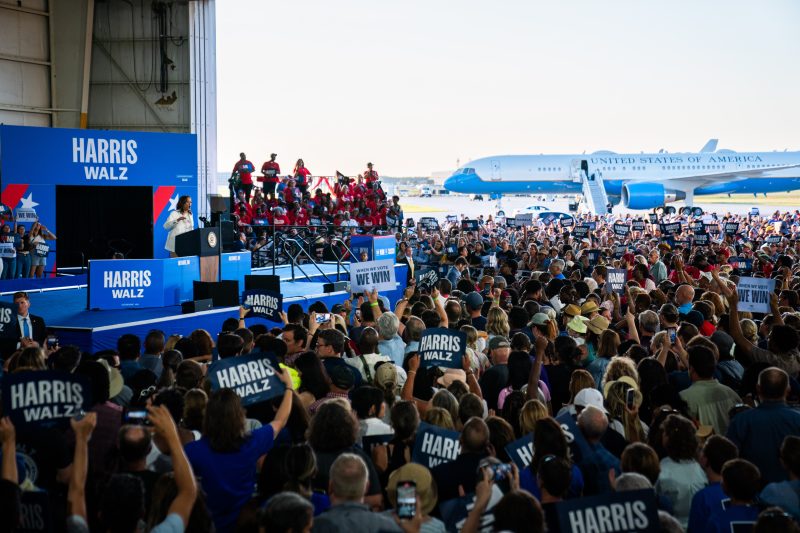In the era of lightning-fast information dissemination and digital image manipulation, discerning what is real from what is fake has become an increasingly challenging task. With the rise of artificial intelligence and sophisticated editing tools, the line between reality and illusion has blurred to a concerning degree. In a recent incident, former President Donald Trump alleged that Senator Kamala Harris’s campaign artificially inflated the size of their crowd through fabricated AI crowd photos. The accusation raises important questions about trust, transparency, and the manipulation of visual content in the online sphere.
The power of AI technology has revolutionized the way images are created and modified. Deep learning algorithms have made it possible to generate highly realistic images that are difficult to distinguish from actual photographs. This ability has been harnessed for various beneficial applications, such as enhancing visual effects in movies or aiding in medical imaging. However, it also opens the door to misuse and deception, as seen in the case of the alleged AI-generated crowd photos.
Accusations of using fabricated AI crowd photos to artificially inflate the perception of support are not new in the realm of politics. The strategic use of imagery to shape public perception has a long history, but the advent of AI has added a new layer of complexity to this age-old practice. In an age where social media plays a pivotal role in shaping public opinion, the ability to manipulate visuals can have far-reaching consequences.
The key issue at the heart of the controversy is the erosion of trust in the veracity of visual content. With the widespread proliferation of fake news and altered images on the internet, it has become increasingly challenging to differentiate what is real from what is fabricated. The lack of trust in the authenticity of visual content poses a significant threat to the credibility of information disseminated online.
Transparency and accountability are essential in maintaining the integrity of visual content in the digital age. It is crucial for individuals and organizations to be vigilant in verifying the authenticity of images they encounter online and to critically evaluate the context in which they are presented. Additionally, platforms and regulatory bodies play a crucial role in combatting the spread of misinformation and ensuring that visual content is used in an ethical and responsible manner.
The incident involving the alleged AI-generated crowd photos serves as a stark reminder of the challenges posed by the rapid advancement of technology in the realm of visual content creation. As AI continues to evolve and become more sophisticated, it is imperative for society to stay informed and vigilant in order to navigate the complex landscape of digital imagery with caution and discernment.
In conclusion, the allegations of fabricated AI crowd photos in Senator Kamala Harris’s campaign highlight the pressing need for increased transparency, accountability, and critical thinking in the realm of visual content creation and dissemination. As technology continues to evolve, it is essential for individuals and organizations to remain vigilant in verifying the authenticity of images and to uphold ethical standards in the use of visual media. Only through a collective effort to combat misinformation and deception can we preserve the integrity and trustworthiness of visual content in the digital age.
